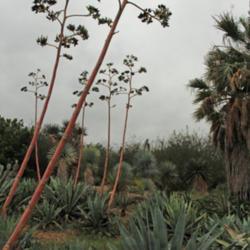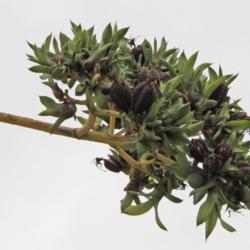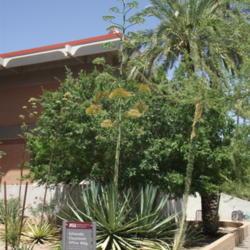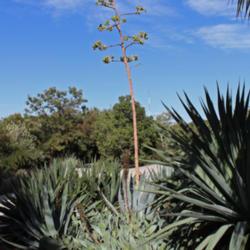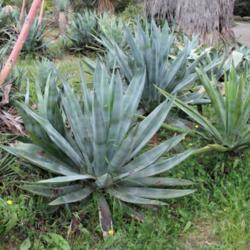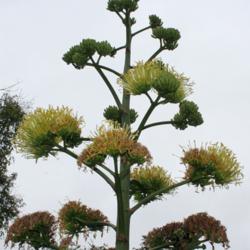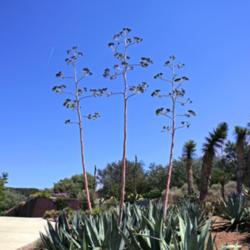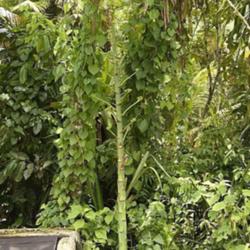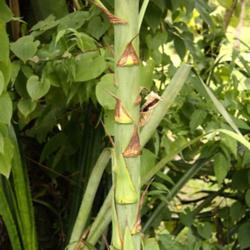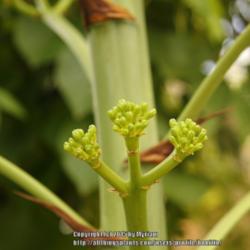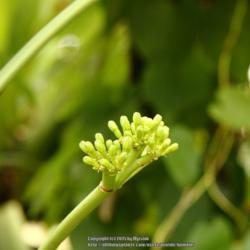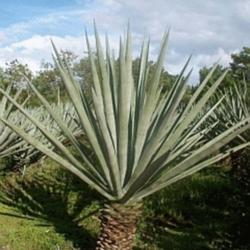Posted by
mcvansoest (Tempe, AZ - Zone 9b) on Feb 18, 2018 8:25 PM concerning plant:
Agave sisalana will get really large. I have seen several plants at flowering age that were at least 8 feet tall, if not a little larger. The leaves are stiff with mostly smooth edges, though on occasion small teeth might be present. The terminal spine is not overly large, but combined with the stiff leaves it does make the plant dangerous as they will easily pierce clothes and skin. The leaves generally have an upright posture, but older leaves will slowly fold down towards the ground, giving the plant a nice shape.
The leaf color is green to glaucous grey, and in the right conditions the leaves will show banding.
The leaves are extremely fibrous and therefore the plant is still used for fiber production. If you have ever bought sisal rope, you will have bought rope made from Agave sisalana. Because of this use, plants have been exported from central America to places in Africa and elsewhere where growing conditions are similar.
Originally these plants were from a more tropical environment than Arizona, but plants take the full summer sun here without any problems. They do not like the cold, though, and plants have gotten damaged by temperatures around freezing, so they are not good in-ground plants for climates that have regular winter freezes. While this plant can be kept as a potted plant, it will eventually outgrow most reasonably sized pots that can be moved around easily, so this is really an in-ground plant.
As can be seen from the images in the database, when it flowers the plant puts up a tall thick inflorescence with many bracts, on which it will carry many yellow flowers. These open sequentially from the bottom to the top of the inflorescence. Unfortunately, the plants that I have seen flowering were not kept around long enough to be able to observe whether they make bulbils.
All in all, this is a very nice plant that can form a great centerpiece in any xeric garden with enough space and mild winters.
